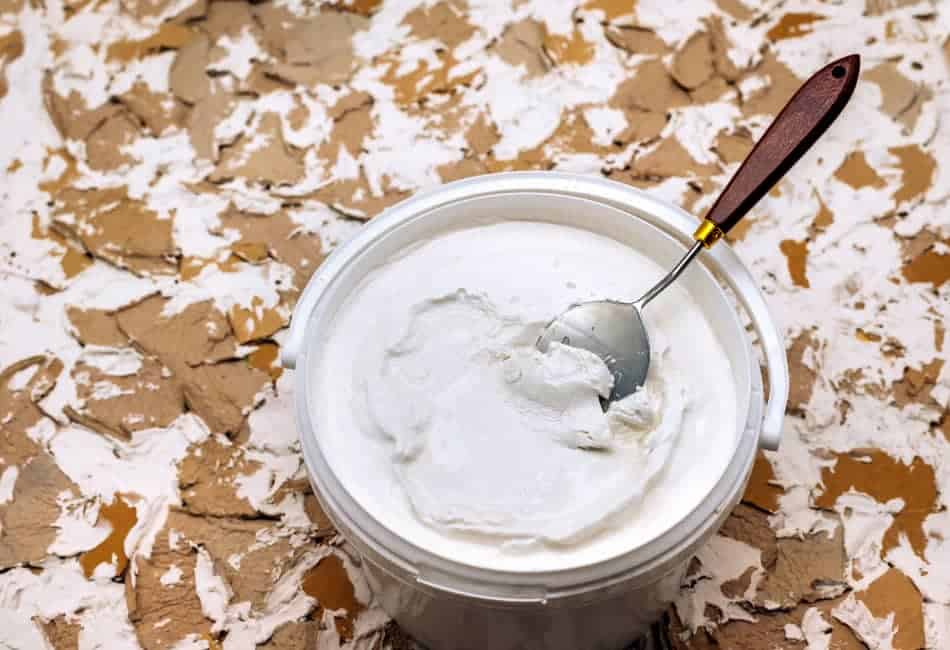Plumbers putty is a type of adhesive that is used in plumbing and construction to seal pipes, joints, or cracks. It is often used for sealing gaps around sinks, bathtubs, toilets, and other fixtures. But can you use plumbers putty on cultured marble?
Cultured marble is a natural stone and a highly porous stone so you do NOT want to use plumbers putty on them. This is because most plumbers’ putty is oil or water-based which could leach and cause serious discoloration to the cultured marble. What you would want to consider using is silicone for your cultured marble.
To learn the details on why you should not use plumbers putty on your cultured marble and the reason to use silicone instead, keep reading this article
1. Plumbers Putty Can Leach And discolor The Cultured Marble
One of the first dangers to using plumbers putty on cultured marble is that it can leach into the marble and discolor it. This is because of how water-soluble plumbers putty is.
Meaning that when an area gets wet for any reason (such as from a leak or flooding), then plumbers’ putty can come in contact with cultured marble surfaces and cause stains over time.
This negative effect of using plumbers putty on your cultured marble is not only due to how water-soluble plumbers putty is as the oil-based plumbers putty will also seep into the marble.
However, due to how much more water-soluble plumbers putty is than oil-based, it is a lot worse for cultured marble surfaces. As mentioned before the stain spreads from when it first starts to other parts of your marble surface.
If you are looking for a way to fix discoloration in your cultured marble from using plumbers putty then we recommend that you use something like Marble Life which will help revitalize and cleanse the surface of any stains or bacteria that has been left behind by overflowing water sources.
This product can also restore the natural shine back to your cultured marble as well as protect against future staining.
This oil-based sealant prevents spills from seeping deep within the pores of the stone where they may not be seen until it’s too late. And if there were an unfortunate spill, it would be easy to clean up.
2. Plumbers Putty Marble Dries And Leaves Behind Residue
The next issue you’re bound to face when you use plumbers putty is that it dries and then leaves behind a residue. The issue is that the plumber’s putty has to be removed before it dries, otherwise you’ll have a permanent mess on your hands.
This is made worse especially when you consider the type of marble you’re using. Marble is porous and can absorb any substance, so if plumbers’ putty isn’t removed before it dries, then it’s going to leave behind a permanent mess that will be difficult to remove.
I find that this is often the case when using plumbers putty to adhere objects onto the marble surface.
When you want your object to be permanent, using epoxy glue is usually a better option because it will dry and not leave behind any mess on the surface of your marble countertop.
Even if you’re only planning on placing something temporary like an advertisement for a sale or promotion, I would recommend using another adhesive that won’t create such messy aftermath when removed.
The best thing about this type of product is that once dried, it makes removal easy by peeling away from its original location. This leaves nothing but clean marble in its wake!
3. Plumbers Putty Can Be Affected By Different Temperatures
The next problem with using plumbers putty on your cultured marble is that it can be affected by different temperatures. How? Plumbing putty can expand and contract in different temperatures.
Meaning, when the temperature rises, the plumber’s putty may expand and when it is cold out, the product will contract. This can cause cracks or breaks in your marble.
Plumbers’ putty also dries very quickly because of its waxy composition and can shrink. So using it on cultured marble could lead to uneven expansion and cracking over time which then leaves the marble looking less than appealing.
Best Alternatives To Plumbers Putty On Cultured Marble
If you’re looking for a good alternative to plumbers putty, silicone is the best option. There are a couple of reasons why this is a great alternative you need to consider.
It Does Not Stain Cultured Marble As Plumbers Putty Does
One of the reasons silicone is a better option than plumbers putty is that it does not stain cultured marble. This is because silicone caulking has no additives that could leach through cultured marble and stain it or damage the surface.
Plumbers putty, on the other hand, can darken in color and leave stains over time which just makes your beautiful piece of furniture or flooring look dull and unappealing.
Silicon Does Not Expand or Contract
Another reason why you would want to go for silicone instead of the more traditional plumbers putty is that silicone does not expand or contract.
This means you won’t have to worry about the material expanding from temperature changes and cracking your surface when it contracts, which can happen with many types of sealants or adhesives including plumbers putty.
Silicon Also Provides Watertight Seal
Silicon does provide a watertight seal, which is perfect for protecting your cultured marble surfaces from water damage.
It’s also a good idea to use silicon if you have kids as they are less likely to try and pull the stuff off and stick them onto their toys (which tends to happen with plumbers putty).
Silicon Sticks Better
Silicon also sticks better than plumbers putty or other sealants. This means that it will stay in place on those high-traffic areas, which is harder to do with plumber’s putty since the material can start to peel off over time and move around more easily if that particular spot is high traffic.
Silicon Is A Lot More Water-Resistant
Silicon is a lot more water-resistant than plumbers putty. This means that your sealant will last longer and take less maintenance in the long run and this can be money-saving for many people.
Tips On Using Silicon On Cultured Marble
- Apply the sealant to freshly cleaned and dry cultured marble.
- Apply a thin layer of silicon that completely covers the cultured marble. The silicone should be applied to an area at least 12 inches in diameter and very thinly so it does not drip over the sides or seep into cracks in the stone, which will cause future problems.
- After applying this first coat, wait for 24 hours. This helps to make sure that the sealant has dried and set properly before applying a second coat.
- To apply an even layer of silicon, use a clean rag or sponge.
- Don’t forget to use a rubber glove when applying silicon sealant in order to avoid getting your hands greasy and sticky.
- Wipe off any excess silicone sealant from the cultured marble once you are done applying it.
- Be sure to wait 24 hours before using your sink again after applying silicon, and do not use abrasives or harsh cleaners on the stone while waiting for that time frame to elapse.
- Apply an even, thin coat of silicon over the affected area surface.
- It should be sticky but not wet upon application as well.
- To make sure the silicone sealant is applied in an even, thin coat, use a clean rag or sponge to apply it evenly.
- Don’t forget to wear rubber gloves while applying silicone so that you don’t get your hands greasy and sticky from handling it.
- After application of silicon sealant, wipe off any excess material from the stone with a dry cloth or household towel before letting stand for 24 hours (do not use abrasives or harsh cleaners on this time frame).
- After waiting for 24 hours after application of silicone sealant to cure prior to using sink again, and do not scrub surfaces during this timeframe as well whereas doing so can nullify its benefits due to the silicone sealant.

